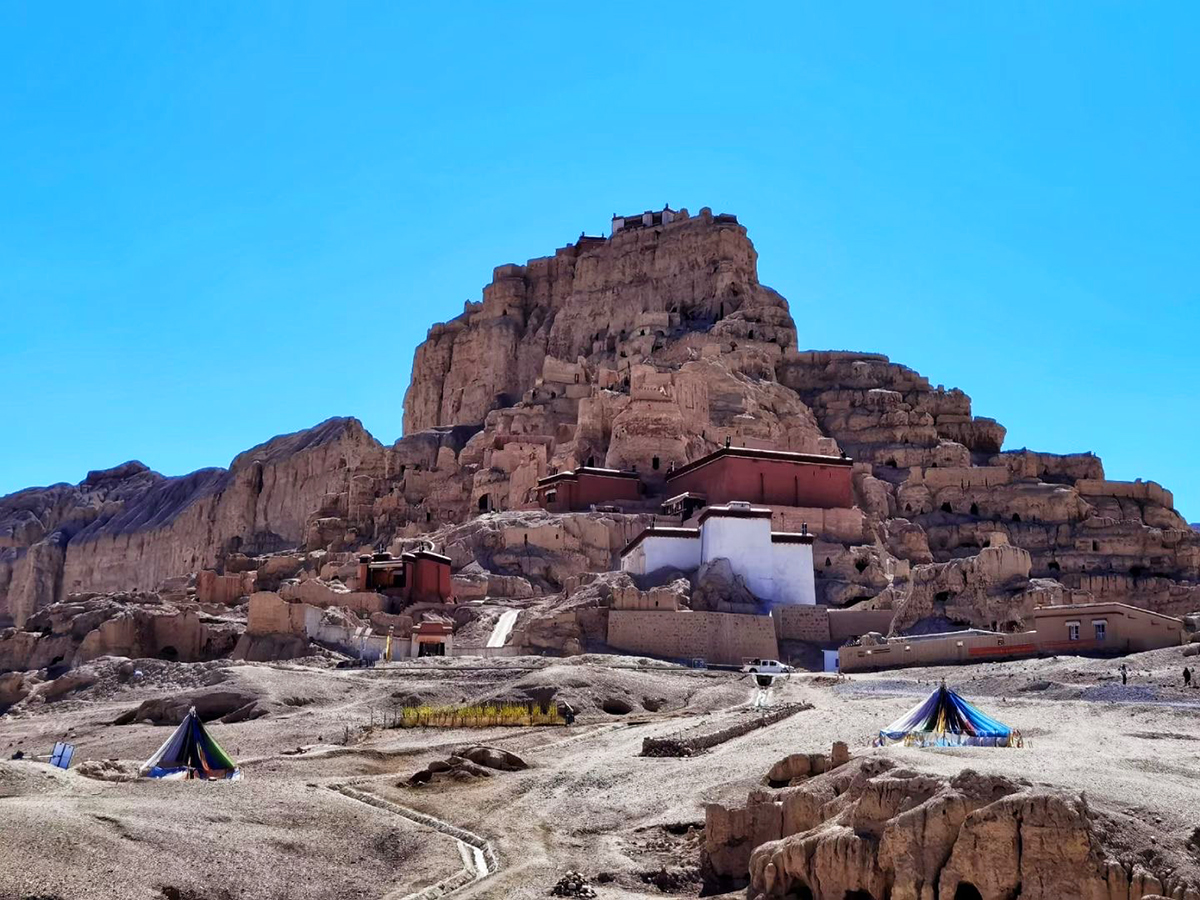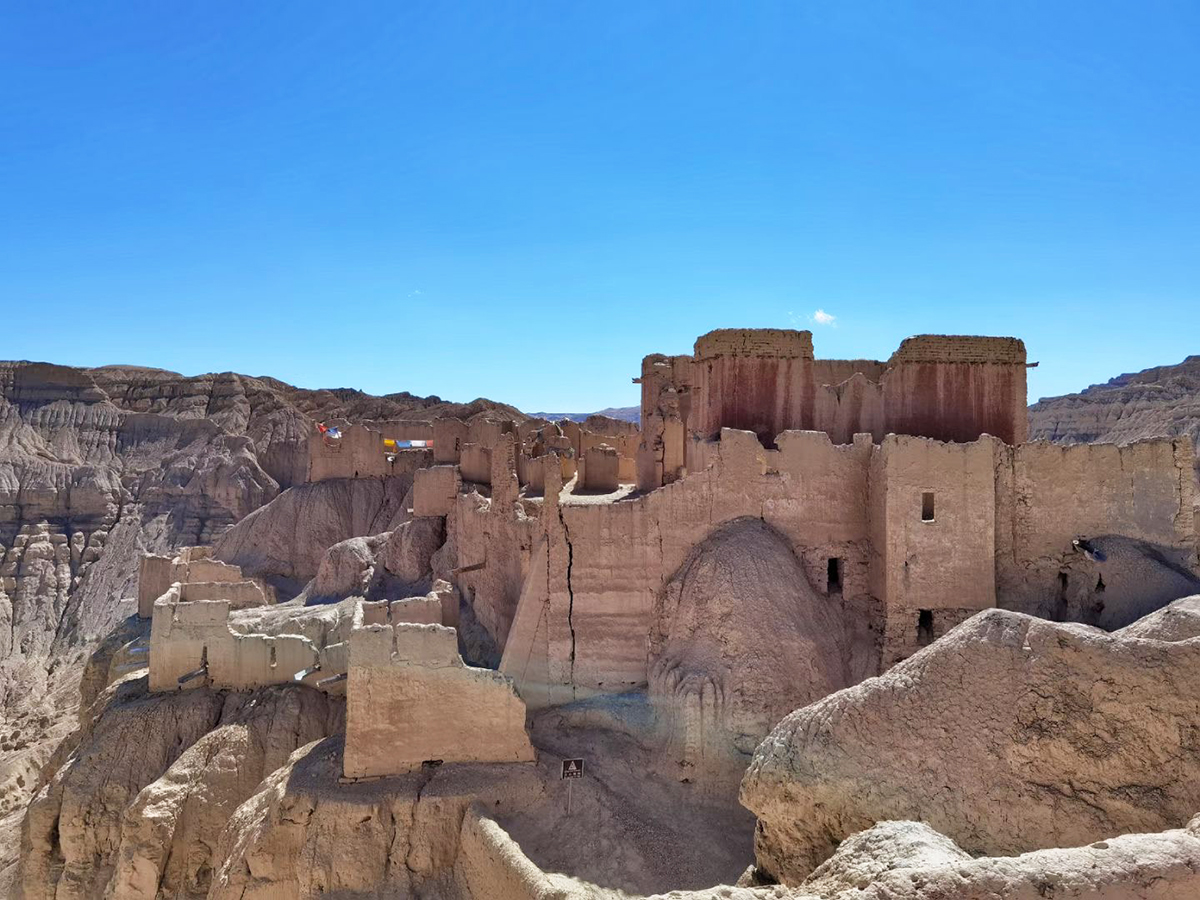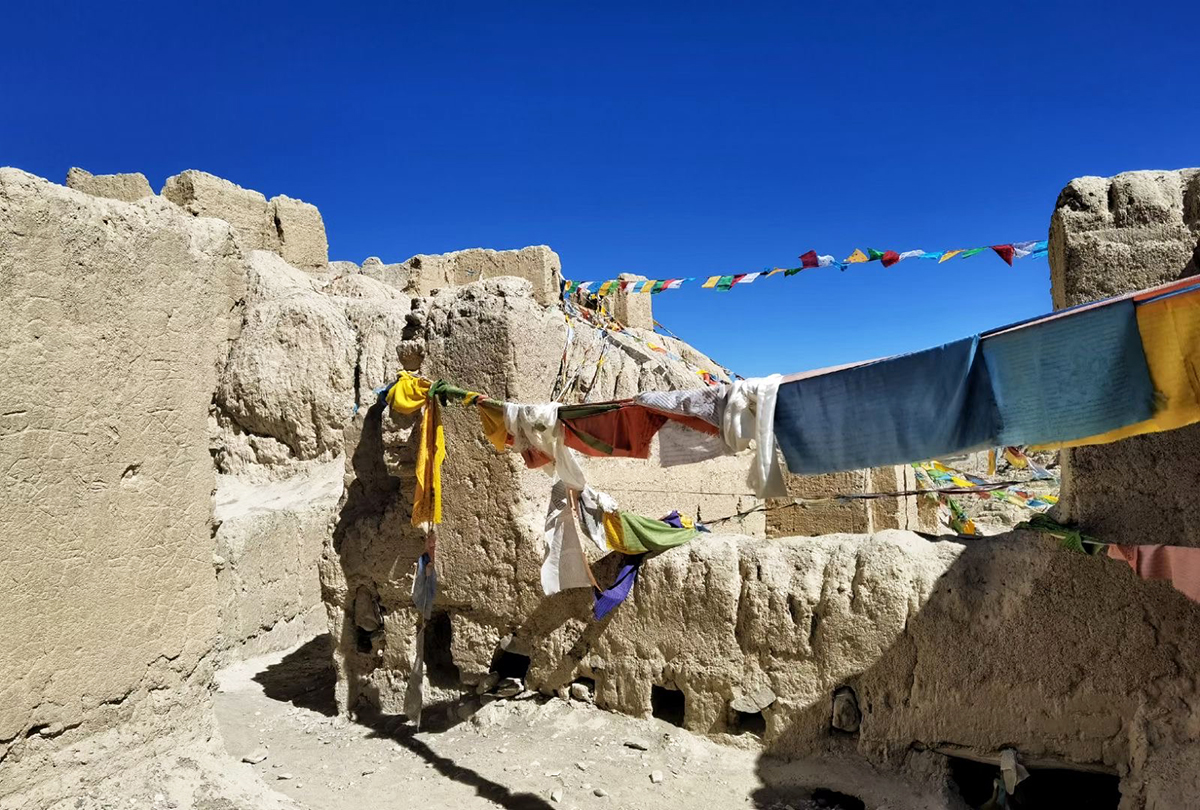
Hidden deep within the rocky mountains, the ruins of the Guge Kingdom continue to tell their story. This cluster of relics made up of ancient palaces and temples are all that remains of the once illustrious Guge Kingdom. Thanks to the dry climate and cool weather, these earthen structures have been beautifully well-preserved for hundreds of years.The murals and other artistic works found throughout the complex demonstrate just how prosperous the kingdom had been in its heyday.
In 842 AD, a ruler by the name of Langdarma, who served as the ninth emperor of the Tibetan Empire, was assassinated by a monk. Rather than mourning the loss of their father, his two sons immediately began a civil war in order to seize the throne. In the end, it was the son born by his first wife who emerged victorious and gained control of the central kingdom based in Lhasa. The son from his second wife, who was named Namde Ösung, lost the war and fled to the eastern territories. However, this regime faced many challenges and was characterized by its instability. In 930 AD, the grandson of Namde Ösung, who was known as Nyi Ma Mgon, decided he wanted to expand his territory and set out to conquer new land. He chose 100 soldiers to go with him and together they headed towards western Tibet.
They arrived at the holy Manasarovar Lake, which shimmers in sapphire-hued splendor at the base of the sacred Mount Kailash. From there, Nyi Ma Mgon conquered the prefecture of Ngari and established his own kingdom. He set the capital in the city of Guge.

Nyi Ma Mgon divided his territory among his three sons. The eldest son took control of Ladakh, which was known as the Kingdom of Lakes. The second son Bkra Shis Mgon received the rocky Guge Kingdom. His third son was awarded Puhrang, which was surrounded by lofty snow-capped mountains.
Bkra Shis Mgon’s eldest son Srong Nge took the throne on his father’s death. He was a devout Buddhist and this influenced much of his reign. He sent monks to India so that they could study Buddhism in more depth, he built the Tholing Monastery, and he finally stepped down as ruler to become a monk, passing the throne on to his younger brother. From then onwards, he was known by his religious name of Ye Shes ‘Od.
According to legend, Ye Shes ‘Od started a war with a neighbouring nation ruled by an ethnic group known as the Karluks, in order to get enough gold so that he could invite a well-known Indian Buddhist religious leader named Atiśa to visit his kingdom. His plan, however, ended up backfiring horrible, as he lost the war and was captured! The leader of the Karluks promised to release him if he converted to Islam. As you can probably guess, Ye Shes ‘Od refused the offer. Instead, he accepted the leader’s second conditional offer, which was to buy his freedom with a pile of gold that was the same height as him! When the time came to make good on the offer, Ye Shes ‘Od nobly told his people that he would rather that they use the gold to invite Atiśa to the kingdom. In the end, Ye Shes ‘Od died in prison and never made it back to his home. When Atiśa heard this story, he was so moved that he visited the Guge Kingdom in 1042 and taught Buddhism there for 3 years. From then onwards, Buddhism enjoyed a golden era in Guge.
Hundreds of years later, in 1624, a Jesuit preacher named António de Andrade arrived in Guge. The King at the time was amazed by Andrade’s teachings and allowed him to build a chapel, where he conducted his missionary work. While the King was pleased with his decision, the Buddhists living in Guge certainly were not and it earned the ire of the Chief Lama, who also happened to be the King’s brother! Chief Lama called on more and more people to become monks in his monastery, while the king asked them to abandon Buddhism. The King, however, did have a good reason for doing this. For many years, the Guge Kingdom had been menaced by the hostile Kingdom of Ladakh. The King recognized that he needed more soldiers, not more monks.
A revolt eventually took place in 1630, and the chaos allowed Ladakh forces to infiltrate Guge. Tsaparang was under siege for months before the King finally surrendered. The royal family and the preachers were captured. This marks the end of the 700-year-long Guge Kingdom.

Nowadays, all that remains of the once illustrious Guge are a cluster of ruins, which include more than 400 rooms, 58 forts, 28 pagodas, 4 temples, 3 tombs, 1 armoury, and some other caves. The whole town is on a hill that is about 300 meters high. The ruins can be divided into three parts: the palace is on the top, the temples are in the middle, and the residential buildings are at the bottom. The rooms are connected by a complicated underground tunnel system.
Restoration of relics was completed in 2016, transforming the Guge Ruins into a living museum. Alongside admiring the magnificent ruins themselves, visitors are also able to see some of the stunning Buddhist art that the kingdom was once famous for, particularly the murals within the four temples.
Explore more about the mysterious Guge Kingdom on our travel: